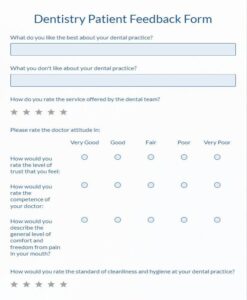Let’s face it, nobody gets into dental hygiene because they love paperwork. We’re all about sparkling smiles and healthy gums, right? But accurate and thorough documentation is an absolutely crucial part of providing excellent patient care and running a successful practice. It protects both you and your patients, ensures continuity of care, and helps you stay on top of important details. That’s where a good dental hygiene documentation template comes into play. Think of it as your trusty sidekick in the fight against plaque and potential legal headaches.
Developing a solid system for documenting your dental hygiene procedures and patient interactions is a smart investment. It may seem tedious at first, but the benefits far outweigh the initial setup. Imagine being able to quickly access a patient’s complete oral health history, including previous treatments, periodontal charting, and home care instructions. This not only improves efficiency but also allows you to provide more personalized and effective care.
In this article, we’ll explore the importance of detailed dental hygiene documentation, the key elements of a comprehensive template, and how you can create or adapt a template to fit the unique needs of your practice. We’ll also delve into some best practices to ensure your documentation is accurate, consistent, and legally sound. So, let’s dive in and make documentation a breeze!
Why Comprehensive Dental Hygiene Documentation Matters
Comprehensive dental hygiene documentation extends beyond simply noting the treatments performed. It’s a detailed record that tells the story of the patient’s oral health journey. This story includes everything from their initial concerns and medical history to the specific procedures performed and the patient’s response to treatment. Think of it as building a case for each patient, ensuring that every decision is supported by evidence and recorded for future reference.
One of the most critical reasons for detailed documentation is legal protection. In today’s litigious environment, having a clear and accurate record of the care provided can be invaluable. If a patient raises concerns or initiates legal action, your documentation serves as your primary defense, demonstrating that you acted responsibly and in accordance with professional standards.
Furthermore, good documentation facilitates continuity of care. If a patient moves, changes providers, or requires specialized treatment, their comprehensive dental hygiene record can be easily transferred, providing the new provider with a complete understanding of their oral health history. This ensures that the patient receives consistent and appropriate care, regardless of who is providing it.
Accurate documentation also plays a vital role in insurance claims. Insurance companies often require detailed information about the treatments performed, the rationale behind them, and the patient’s response. Comprehensive documentation can help streamline the claims process and minimize the risk of denials or audits.
Finally, a well-maintained record allows you to track patient progress over time. You can easily compare current findings with previous assessments, identify trends, and adjust treatment plans as needed. This data-driven approach ensures that your patients receive the most effective and personalized care possible. A standardized dental hygiene documentation template is your best friend!
Key Elements of a Dental Hygiene Documentation Template
A well-designed dental hygiene documentation template should include several key elements to ensure comprehensive and accurate record-keeping. These elements can be organized into categories to streamline the documentation process and make it easier to retrieve information when needed.
First and foremost, the template should include detailed patient information, such as their name, date of birth, medical history, and current medications. Any allergies or sensitivities should be clearly noted, as well as any conditions that may affect their oral health or treatment.
Next, the template should include a section for recording the patient’s chief complaint or reason for visit. This should be documented in the patient’s own words, if possible, to capture their specific concerns. The template should also include a section for documenting the extraoral and intraoral examination findings, including any abnormalities or lesions.
The periodontal assessment is another crucial component of the template. This should include probing depths, recession measurements, bleeding on probing, furcation involvement, and mobility. The template should also provide space for documenting the patient’s periodontal diagnosis and treatment plan.
The template should also include a section for documenting the dental hygiene treatment performed, including the type of scaling and root planing, polishing agents used, and any adjunctive therapies administered. The patient’s response to treatment should also be noted, including any discomfort experienced and the effectiveness of the treatment.
Finally, the template should include a section for documenting patient education and home care instructions. This should include specific recommendations for brushing, flossing, and other oral hygiene practices. The patient’s understanding and acceptance of these recommendations should also be noted, as well as any barriers to compliance. The template can even include a section for scheduling the patient’s next appointment.
By incorporating these key elements into your dental hygiene documentation template, you can ensure that you are capturing all the necessary information to provide comprehensive and effective patient care.
We are truly in an era where efficient record-keeping is valued by everyone. Creating a systematic approach and consistent data entry will benefit both patients and the practice.
Proper dental hygiene documentation is an important tool that must be utilized for the success of any dental clinic.



